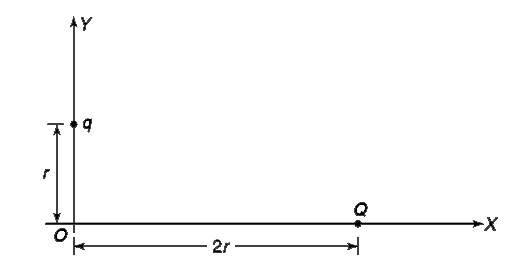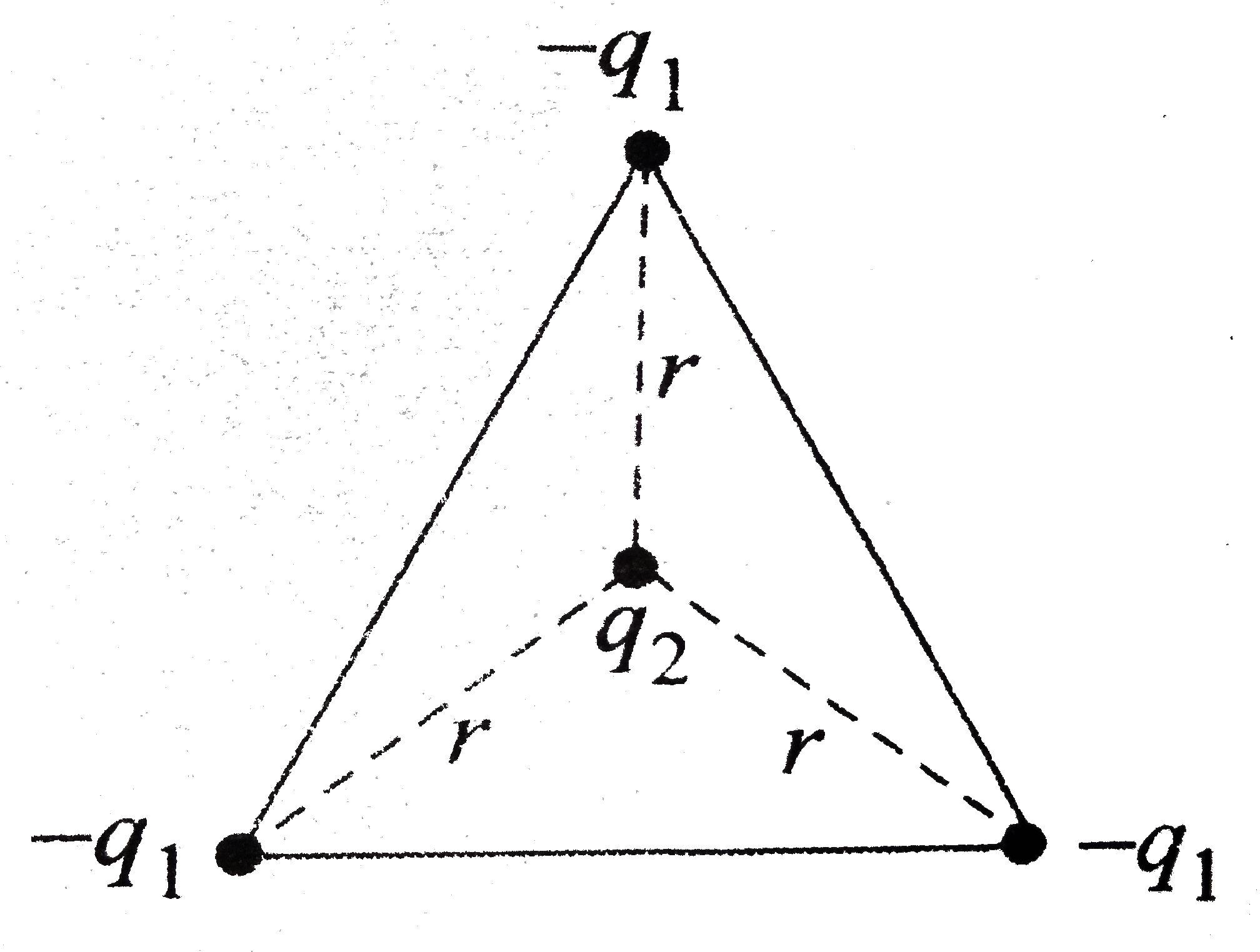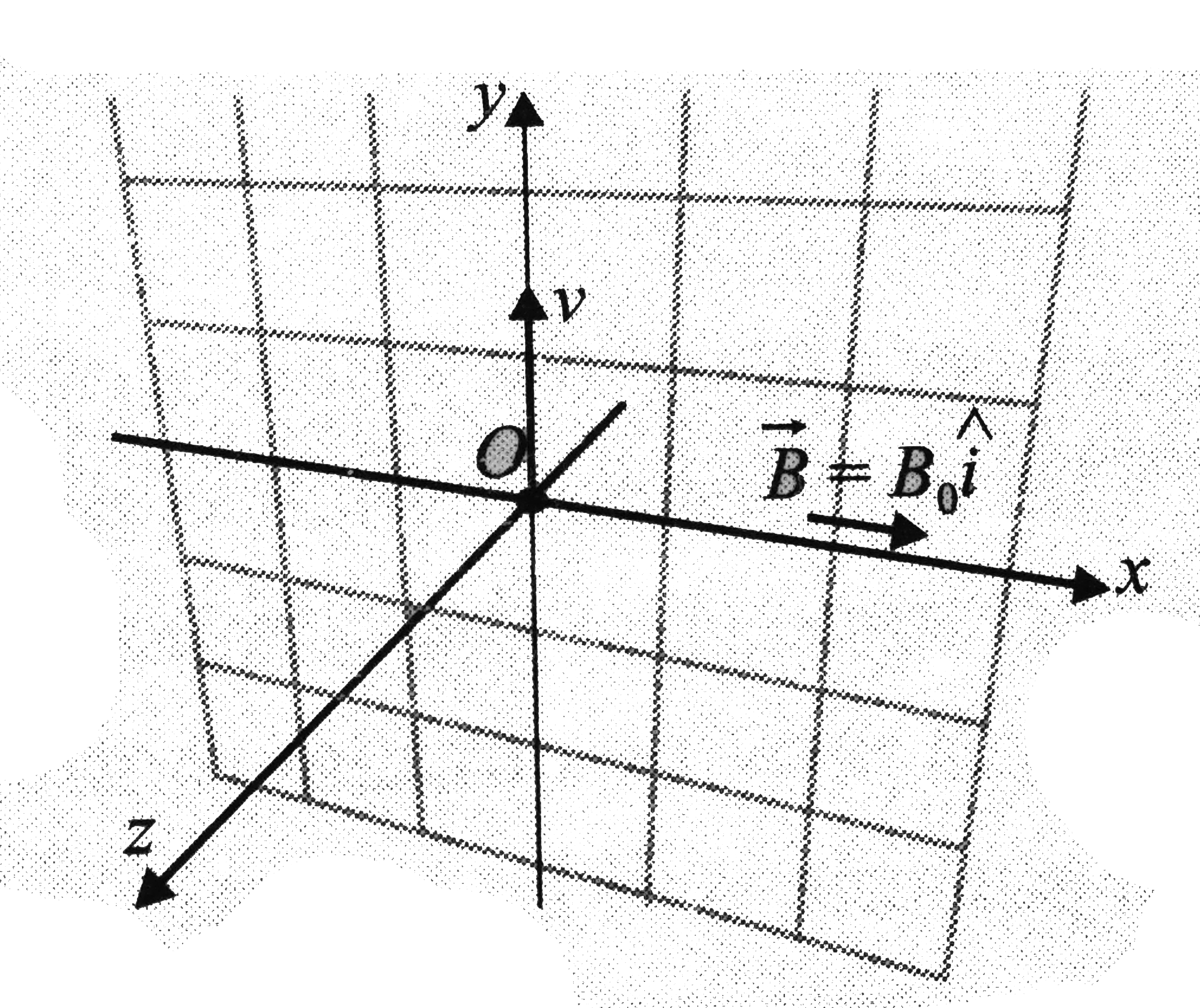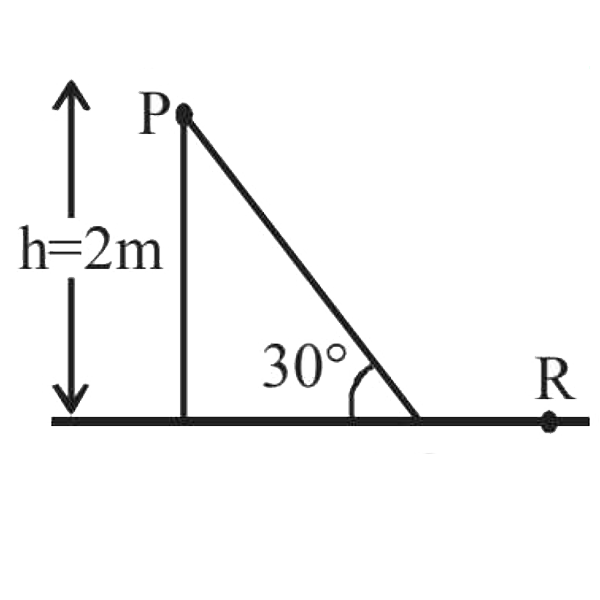Two charged particle of equal mass are constrained to move along X and Y direction. The X – Y plane is horizontal and the tracks are smooth. The particles are released from rest when they were at positions shown in the figure. At the instant distance of q becomes 2r from the origin, find the location of charge Q.

The correct Answer is:Q is at a distance of 4r from O.
Step by step video, text & image solution for Two charged particle of equal mass are constrained to move along X and Y direction. The X – Y plane is horizontal and the tracks are smooth. The particles are released from rest when they were at positions shown in the figure. At the instant distance of q becomes 2r from the origin, find the location of charge Q. by Physics experts to help you in doubts & scoring excellent marks in Class 12 exams.
Topper's Solved these Questions
Similar Questions
Three equal negative charges, −q1 each form the vertices of and equilateral triangle . A particle of mass m and a positive charge q2 is constrained to move along a line perpendicular to the plane of triangle and through its center, which at a distance r from each of the negative charges as shown in fig. The whole systen is kept in gravity-free space, Find the tome period of vibration of the particle for small displacement from the equilibrium position.
 View Solution
View SolutionElectric field E = – bx + a exists in a region parallel to the X direction (a and b are positive constants). A charge particle having charge q and mass m is released from the origin X = 0. Find the acceleration of the particle at the instant its speed becomes zero for the first time after release.
View Solution
Knowledge Check
- Question 1 - Select One
A charged particle of mass m and charge q is released from rest in an electric field of constant magnitude E. The kinetic energy of the particle after time t is
A2E2t2mqBE2q2r22mCEq2m2t2DEqm2t - Question 2 - Select One
A charged particle of mass m and charge q is released from rest in an electric field of constant magnitude E. The kinetic energy of the particle after time t is
A2E2t2mqBE2q2t22mCEq2m2t2DEqm2t - Question 3 - Select One
Two identical particles of mass m carry a charge Q, each. Initially one is at rest on a smooth horizontal plane and the other is projected along the plane directly towards first particle from a large distance with speed v. The closest distance of approach be .
A14πQ2mvB14πɛ04Q2mv2C14πɛ02Q2mv2D14πɛ03Q2mv2
Two particles each charged with a charge +q are clamped on they axis at the points (0, a) and (0, - a). If a positively charged particle of charge q0 and mass m is slightly displaced from origin in the direction ofnegativex-axis.
(a) What will be its speed at infinity?
(b) If the particle is projected towards the left along the x-axis from a point at a large distance on the right of the origin with a velocity half that acquired in part (a), at what distance from origin will it come to rest ?
[√2Kqq0ma,√15a]View SolutionA charge particle of mass m and charge q is projected with velocity v along y-axis at t=0.

Find the velocity vector and position vector of the particle →v(t)and→r(t) in relation with time.View SolutionA charged particle (charge q, mass m) has velocity v0 at origin in +x direction. In space there is a uniform magnetic field B in -z direction. Find the y coordinate of particle when is crosses y axis.
View SolutionA point particle of mass m, moves long the uniformly rough track PQR as shown in figure. The coefficient of friction, between the particle and the rough track equals μ. The particle is released, from rest from the point P and it comes to rest at a point R. The energies, lost by the ball, over the parts, PQ and QR, of the track, are equal to each other, and no energy is lost when particle changes direction from PQ to QR.
The value of the coefficient of friction μ and the distance x (=QR), are, respectively close to:
 View Solution
View SolutionA particle of charge q and mass m moves rectilinearly under the action of an electric field E=α−βx. Here, α and β are positive constants and x is the distance from the point where the particle was initially at rest. Then, the
View Solution

